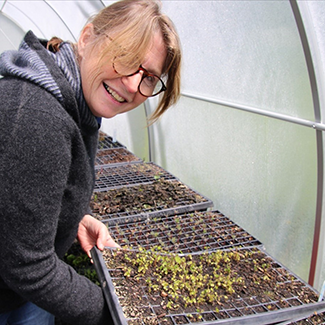-
-
-
Cr Kate Wilson
-
-
-
-
-
-
-
-
-
-
-

 Kate Wilson is always up for a cup of tea and a natter. She loves to engage with people and exudes enough energy to power a small town. Did you know redwoods sequester carbon for 2000 years? You would if you had a chat with Kate. However, when it comes to working with the community, her motto is ‘listen, don’t tell’. “We are here to be the voice of the people, so what can we do to achieve the passions of the community?”
Kate Wilson is always up for a cup of tea and a natter. She loves to engage with people and exudes enough energy to power a small town. Did you know redwoods sequester carbon for 2000 years? You would if you had a chat with Kate. However, when it comes to working with the community, her motto is ‘listen, don’t tell’. “We are here to be the voice of the people, so what can we do to achieve the passions of the community?”
Kate lives in Middlemarch with husband Callum and daughter Ginny. Son Michael farms in Cardrona. The landscape of quartz-rich old rocks and new mountains is enduring and resolute — a little like Kate’s steadfast and tenacious personality. Gnarly problems, chewy conversations: she’s all about getting schist done, with an unorthodox approach to finding solutions. For example, back in 2001 there was a shortage of rural nurses and a surfeit of bachelor farmers. So why not put on a love train to transport eligible ladies to a Middlemarch Singles Ball? Problem solved.
Another problem needing a solution — riparian planting. “You can’t plant natives,” someone (foolhardy) said to Kate, who went off to prove them wrong, flying in the face of a climate that’s harsh, frosty and dry. Willows, trees that choke our waterways, can still provide a grandfather’s shade to native seedlings planted beneath them, allowing the new trees to come up under their protection. Talk about succession planning.
It’s this kind of lateral thinking, combined with a talent for gentle persuasion and a pinch of good old-fashioned bolshiness, that she brings to her role as an Otago Regional Councillor as well as the many boards and committees she sits on and/or chairs, including the Otago Central Rail Trail Trust, Dunedin Tunnels Trail Trust and Regional Land Transport Committee. A keen cyclist, after 12 years as a Dunedin City Councillor, Kate’s idea of a break between jobs was biking the North Island. She’s currently making plans to ride the 1500km Sound to Sounds now that she has finished a little light home renovation. “There’s so much more to do than housework.”
Home is Strathburn, built from hand-hewn local stone in the 1880s. Back in the days when the estate stretched all the way to Patearoa and had two live-in gardeners, it was reported to have the best garden in Australasia.
A sunshade of 100-year-old beech and oak shelter a home filled with eclectic antiques and ancestral portraits, but Kate’s more likely to be found outside — down the paddock in her Redbands, hands in the dirt of her tree nursery, where baby tōtara are nurtured alongside other natives.
“We are always saying we want others to achieve good. But what does ‘good’ look like? Well, this is what good looks like for me,” she says. Kate is a plant propagator. Carex, silver birches, cabbage, marsh ribbonwood, chestnut, toi toi, pittosporum, cottonwood, kānuka, alder — grown from seeds and then sold or given away to support a good cause.
What about growing democracy? “We have to start listening and encouraging participation. There’s a need for plain speaking and simplicity too. Uncertainty around rules is why people give us the side eye. Let’s cut through the bureaucracy, encourage people to do things without defaulting to the regulatory system. What are the incentives, the carrots rather than the sticks? And any action needs to be at catchment scale, rather than a one-size-fits-all approach, catchment by catchment. Get the right people in the room, talk to them and appreciate why they might not want to do something. Listen. Understand what the public want. Find the best fit.”
Kate has five key principles for each catchment: heritage, biodiversity, water, recreation and pest control. “There should be something in these guiding principles for everyone. Not into planting? Then heritage is equally important. Everyone has a part to play, and together we can grow something wonderful.”
